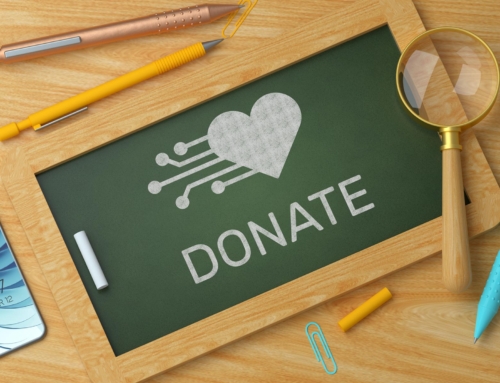Nonprofits are generating more funding than ever before. Public support for charities and other cause-based organizations is continually rising and people are contributing even more to the missions that resonate with them. Today, the average American supports 4.5 charities and over 60% of millennials donate an average of $481 to nonprofits each year.
Modern donors have different purchasing habits than those of the past though, and NPOs must have the right processes in place to maximize their fundraising success. For example, donors may have once preferred to send in checks, but now, over half of donors prefer to pay via debit or credit card.
Organizations prefer it, too. The convenience of credit card payments makes it possible for donors to send money in an instant, and for NPOs to set up effective recurring donation systems.
Generating donations using a subscription or standard monthly commitment sounds daunting – but it gets results, and it’s much easier to implement than you probably imagine. In this post, we’ll explain the benefits of recurring donations for nonprofits and help you decide whether it is the best model for your organization.
What Are Recurring Donations?
Recurring donations are made on an ongoing, usually monthly, basis. Instead of an individual giving a one-time donation to a charity or foundation, they commit to donating a particular amount regularly on a specified schedule.
Monthly giving programs provide numerous benefits to nonprofit organizations. When integrated properly, the incentives far outweigh that of other gifting models like one-time donations or annual pledges. Subscription-based donation systems allow your organization to:
- Increase the value of each donor. It is often difficult to collect repeat donations from contributors, but those who commit to monthly donations usually do so for the long haul. Monthly donors have a retention rate of 90% – compared to 46% on average, 23% for first-time donors, and 60% for repeat donors, according to the Non-Profit Recurring Giving Benchmark Study,
- Eliminate the need to ask again. Some donors get frustrated by NPOs that frequently reach out to them for repeat donations. However, when donors commit to recurring donation programs, they make payments on a regular basis with no additional effort from the organization.
- Enjoy more accurate financial projecting. With traditional models (one-time gift or pledge-based), projecting future donations is challenging, if not impossible. Money that was pledged but never realized can divert the organization’s plans. Recurring donation systems make it easy to account for future funds since these donors are often the most loyal, the most consistent, and have the highest retention rates.
Attracting Retaining Long-Term Sustaining Members
Although it may seem counterintuitive, attracting recurring donors usually takes the same amount of effort as attracting one-time donors. Although they are required to commit to giving more over time with monthly gifts, they receive many benefits that single- or multiple-occasion contributors do not.
- Automation: Donors enjoy giving and gifting, but they don’t necessarily enjoy sending checks every month, or even logging into your platform’s donation page regularly to submit their contribution. Efficient recurring systems automatically charge the payment method that the donor has on file, allowing them to contribute with no effort. The subscription model is familiar to most people since they often pay for other monthly commitments like cable, internet, magazines, etc.
- Fewer prompts: Donors enjoy engaging with charities and foundations, but they don’t always appreciate receiving prompts asking for additional donations. With recurring donations, they’ve already made the commitment to give monthly, and additional prompts are unnecessary. Instead of receiving more solicitation emails, they receive messages about how their donations have helped. As a result, donating becomes less about ask and give, and more about the actual cause that they have decided to support.
- Engagement: Unlike one-time donors, recurring donors have ongoing relationships with the NPO, and as a result, they feel more engaged with its purpose. Over time, they receive multiple updates and progress reports. As they realize how their gifts are helping, they become even more involved. Recurring donation systems, when aligned with proper communication, creates loyalty – sustaining members attend more events, support more regularly with additional giving, and often, tell their peers about the foundations that they support.
Mistakes to Avoid with Recurring Donations
Recurring donations provide numerous benefits to NPOs. However, organizations must be careful to avoid certain mistakes that can cause donors to cancel their commitments.
According to a study by IMPACTS Research, there are several reasons why donors stop giving to an organization. Donors reported that the top issues included:
- Not being thanked or acknowledged for previous gifts.
- Not asked to donate again.
- Lack of communication about the use of funds/results of their gift.
- Unactualized intent (forgot).
Simply accepting recurring donations eliminates half of these issues – organizations don’t need to ask donors to donate again, and since they are automatically charged, forgetfulness becomes less of a challenge.
The other two issues are communication-based. For your donation system to work, it must combine automated payments with the right message, sent at the ideal time. Some payment solutions, like Chargent, allow you to automatically send emails to your customers before, during, and/or after their donation is collected.
Retaining Donors
When it comes to communication, here are three mistakes you should absolutely avoid if you want to retain your sustaining members:
- Forgetting to say ‘thank you’: Don’t get too comfortable with donors making regular contributions, but instead, treat every donation like a new experience. After each contribution, send a personalized email notifying them that the donation was processed, and sincerely thanking them for their continued support. A bit of recognition and appreciation goes a long way in keeping donors happy and engaged.
- Failing to update donors on progress: Donors don’t just contribute because they are nice, they do it because they believe in your cause and they want to help progress it forward. Many subscribing members who choose to stop contributing do so because they don’t feel that the NPO is transparent about how they are using their donations.
- Not following up on missed donations: Many organizations fail to follow up when a donor misses a scheduled contribution, or when their automated donation fails to process. However, a missed donation doesn’t necessarily mean that they intended not to pay – they may have forgotten to make the funds available in their accounts, or got a new credit card. If a donation fails, send them a gentle reminder explaining the situation, and give them the opportunity to update their payment method. In most cases, donors will resolve the issue and continue to make their monthly contributions.
Implementing a Recurring Donation System
To collect recurring donations, you need to have the right payment solutions in place. Ultimately, your system should offer the highest level of convenience to both donors and the organization. It should allow automated donations to take place with no effort from either party. Here are a few tips to help you develop the best system for collecting donations.
Accept Donations the Way Donors Prefer
First, make sure that you accept donations using the methods that customers prefer. Many customers prefer paying through credit and debit cards, but ACH (bank draft) donations are popular as well. If a donor prefers for donations to come directly from their bank accounts, but the organization only accepts credit card donations, it may delay their contribution or cause them not to donate at all.
ACH bank payments can also reduce missed donations that come as a result of outdated payment information. People may change credit cards often, but they tend to keep the same checking account for the long-term. The average U.S. adult uses the same checking account for around 16 years. A quarter of these individuals hold on to the same account for over 20 years, according to a study by Bankrate and MONEY.
Automate Donations
As mentioned, automated donations are more convenient for both the donor and the organization. Unfortunately, many payment solutions don’t allow NPOs to automate recurring payments. Ensure that the solution that you choose provides enough flexibility to retrieve donations automatically without having to manually set up the transaction each month.
Salesforce users have the advantage of accessing robust payment applications like Chargent. By allowing companies and organizations to collect recurring payments and donations, we’ve become Salesforce’s most popular payment app.
Automate Communications
Unfortunately, you can’t (or at least, shouldn’t) automate all of your emails to donors. Some things, like updates and progress reports, seem more genuine when wrapped up in a personalized email from your NPO. However, there are several types of communications that should be automated, including:
- Thank you confirmations: Many donors who cease relationships with NPOs do so because their donation was not acknowledged. Use a payment solution like Chargent, which allows you to send out automatic confirmations after a donation has been submitted. Use this confirmation to thank the donor, to let them know how much their contribution matters, to provide a receipt for tax purposes, and to assure them that their continued donation is making an impact.
- Donation failure notices: In the event that a donation is rejected by the donor’s bank or creditor, have a system in place to send out automated notices. Gently notify them that their contribution did not go through, and offer a link to the donation portal where they can update their payment details. If you can provide a button or link for customers to update their payment information themselves online, many donors will choose this method. By allowing donors to take action themselves, rather than needing to remember to call later during business hours, most donors will update their information and the payment will run successfully – without any additional effort from you or your staff.
Getting Started with Recurring Giving
Establishing a system for collecting recurring gifts and donations may seem complicated, but it’s actually very simple – as long as you have the right payment solution in place. Before you set up a recurring donation program, choose a flexible solution that automates collections, streamlines communication, and fits the needs of your organization.
If you are using Salesforce for managing customer relationships, your payment solution choice is clear – choose Chargent. With Chargent, you can enable payment on any Salesforce object, connect to dozens of payment gateways, set up one-time or recurring billing, and automate the entire process.









